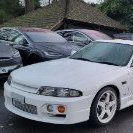Announcements
-
Similar Content
-
Latest Posts
-
By Murray_Calavera · Posted
All of that material you found hard to remove is hard to remove for a reason. If the factory could get away with using paint I'm sure they would. If I was doing the repair, I'd be looking to replace the sealant I had just removed with something equitant or better. -
its not really a truck bed liner
-
No, i used Rust Encapsulator Plus. https://www.eastwood.com/eastwood-rust-encapsulator-plus-quart.html?gad_source=1&gclid=Cj0KCQjwo8S3BhDeARIsAFRmkONxM27m1gqntP8Uw-ktrfx9g2Eq_UtGGcqlM0Sn3sYdcU1RyivLnNEaAi7LEALw_wcB&wcid=18675710285&wickedid=657100129148&wickedsource=google&wv=4
-
1.80 yen for a slice of pizza... or is it supposed to be 180 yen?? Unfortunately it was the latter 😢 Didn't try it because we'd just left a Kobe beef restaurant and had no intention of going for a slice of pizza. 2 Bros Pizza at Hankyu Sannomiya station: https://g.co/kgs/HrVzGV8
-
A Dodge Challenger and two Chrysler 300Cs with straight pipes making lots of noise just over from the Ebisubashi (Ebisu bridge) https://www.instagram.com/reel/DAQqr_iNnCB/?utm_source=ig_web_copy_link&igsh=MzRlODBiNWFlZA==
-




Recommended Posts
Create an account or sign in to comment
You need to be a member in order to leave a comment
Create an account
Sign up for a new account in our community. It's easy!
Register a new accountSign in
Already have an account? Sign in here.
Sign In Now